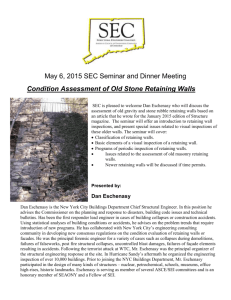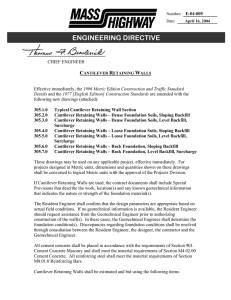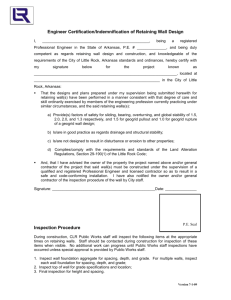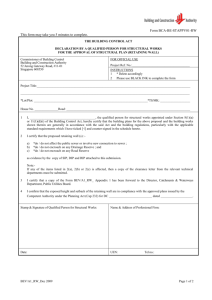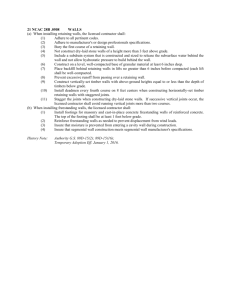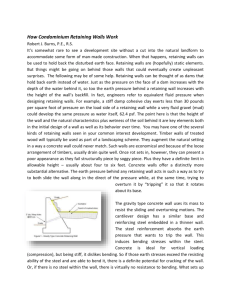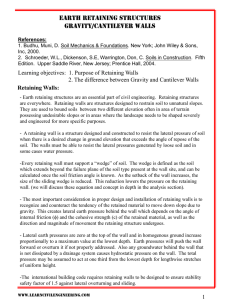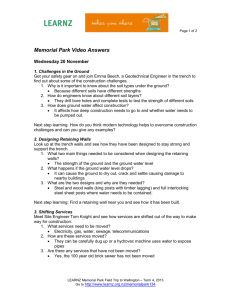chapter v
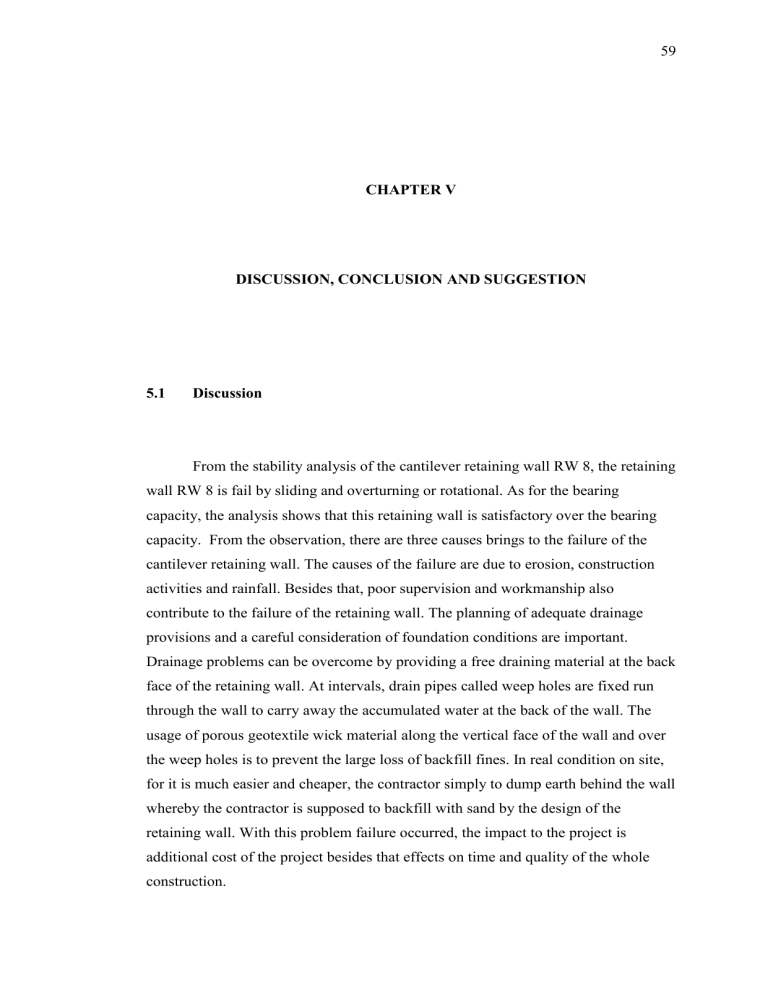
59
CHAPTER V
DISCUSSION, CONCLUSION AND SUGGESTION
5.1
Discussion
From the stability analysis of the cantilever retaining wall RW 8, the retaining wall RW 8 is fail by sliding and overturning or rotational. As for the bearing capacity, the analysis shows that this retaining wall is satisfactory over the bearing capacity. From the observation, there are three causes brings to the failure of the cantilever retaining wall. The causes of the failure are due to erosion, construction activities and rainfall. Besides that, poor supervision and workmanship also contribute to the failure of the retaining wall. The planning of adequate drainage provisions and a careful consideration of foundation conditions are important.
Drainage problems can be overcome by providing a free draining material at the back face of the retaining wall. At intervals, drain pipes called weep holes are fixed run through the wall to carry away the accumulated water at the back of the wall. The usage of porous geotextile wick material along the vertical face of the wall and over the weep holes is to prevent the large loss of backfill fines. In real condition on site, for it is much easier and cheaper, the contractor simply to dump earth behind the wall whereby the contractor is supposed to backfill with sand by the design of the retaining wall. With this problem failure occurred, the impact to the project is additional cost of the project besides that effects on time and quality of the whole construction.
60
5.2
Conclusion
The main function of retaining walls is to stabilize hillsides and control erosion. When roadway construction is necessary over rugged terrain with steep slopes, retaining walls can help to reduce the grades of roads and the land along side of the road. Some road projects lack available land beside the travel way, requiring construction right along the toe of the slope. In these cases, extensive grading may not be possible and retaining walls become necessary to allow for safe construction and acceptable slope conditions for adjacent land uses.
Where soils are unstable, slopes are quite steep, or heavy rainfall is present, retaining walls help to stem erosion. Excessive rainfall can undermine roadways and structures and controlling sediment runoff is a major environmental and water quality consideration in road and bridge projects. In these situations, building rigid retaining walls, rather than grading excessively, reduces vegetation removal and reduces erosion caused by rainfall. In turn, the vegetation serves to stabilize the soil and filter out sediments and pollutants before they enter the water source, thus improving water quality.
There are various types of rigid retaining walls. Regardless of the type of the wall, however, all rigid retaining walls should be backfilled with granular materials that permit sufficient drainage to keep water pressure from pushing the structure outward. Some also use drainage devices, such as weep holes to prevent water from getting trapped behind the structure. It is important to note that these retaining walls generally required analysis of stability and structural design to ensure the stability of the rigid retaining walls.
61
5.3
Suggestion
Whether analyzing an existing cantilever wall or designing a new one, geotechnical global stability for rigid body translation (horizontal sliding) and rigid body rotation (overturning about the toe of the wall) generally govern. .[ Huntington
(1957) ] . Calculations find that sliding is more critical mode of failure for cantilever retaining walls supported on a soil subgrade. As a consequence and with few exceptions, textbooks and design manuals show the use of shear key beneath the footing of a cantilever wall as the preferred way to enhance it’s sliding stability in a new design as opposed to simply making the wall’s footing wider. As a result, civil engineers and others who design cantilever retaining walls have come to assume that a shear key is a necessary component of cantilever retaining wall. Therefore, a study and analysis of whether relying on a shear key underneath the base will provide substantial part of sliding resistance for cantilever retaining wall or not is an aspect recommended to look in further. Besides that, there is opinion stated that the shear keys are both uneconomical and unnecessary. Furthermore, relying on a shear key to provide a substantial part of sliding resistance can lead to a wall that may displace excessively in the horizontal direction to mobilize lateral earth pressures on the face of the shear key is also another scope suggested to further study on it.
